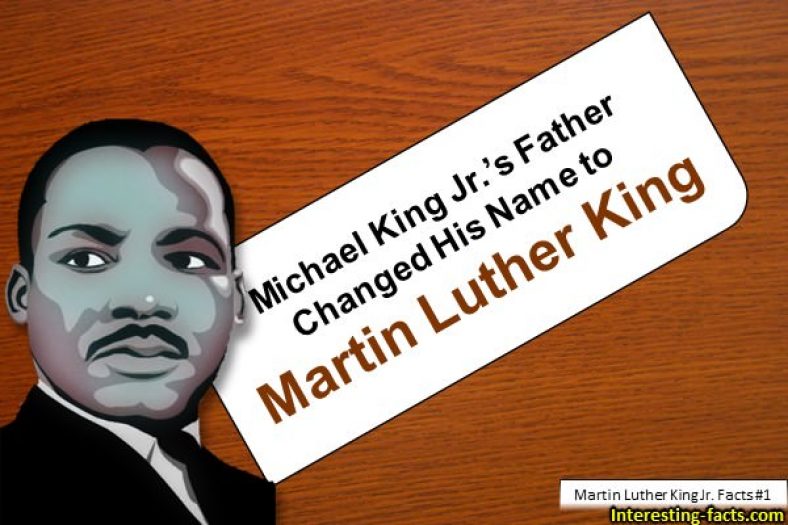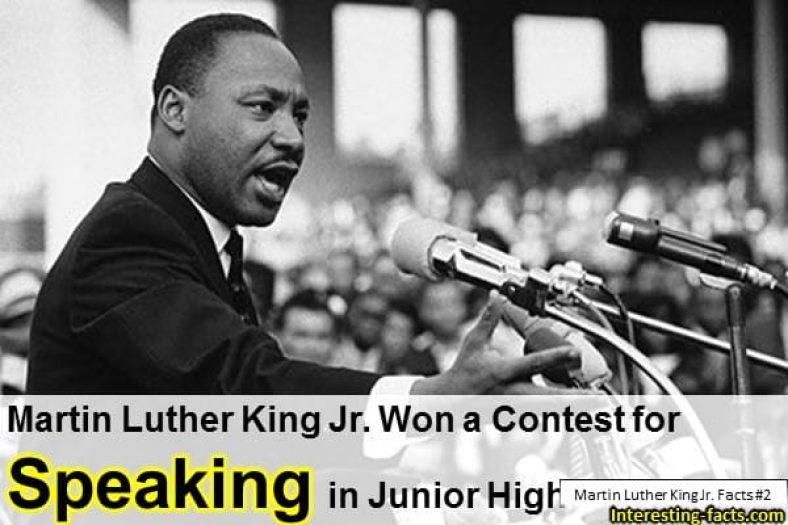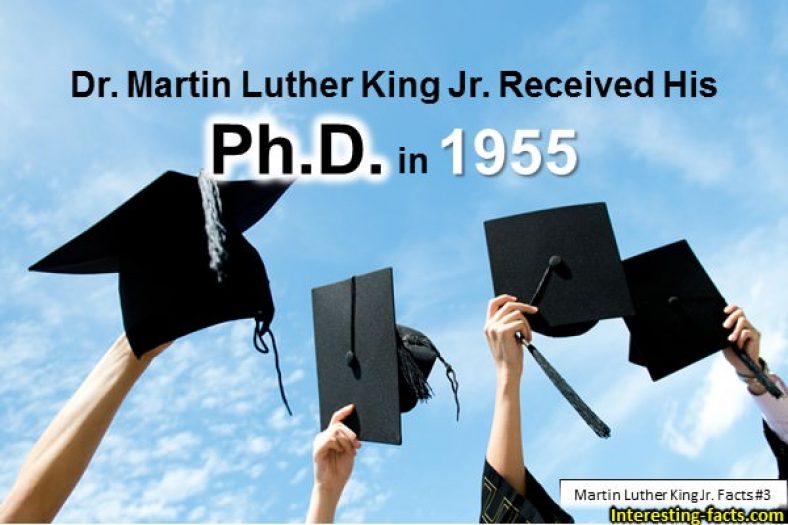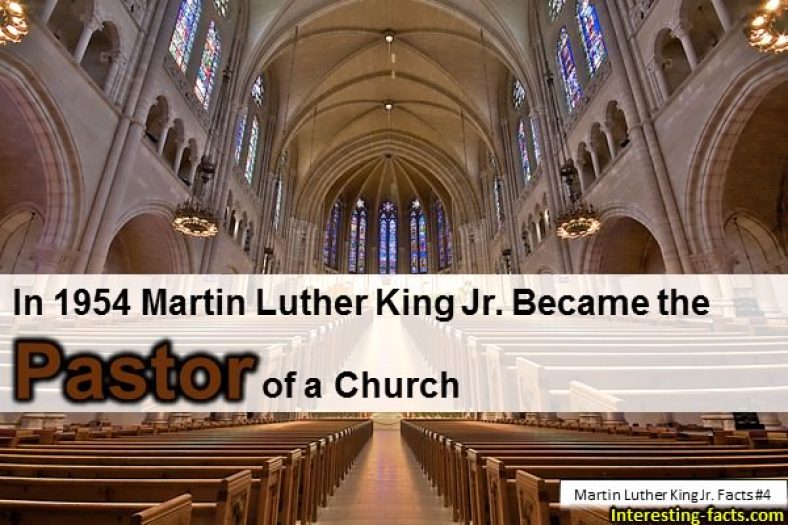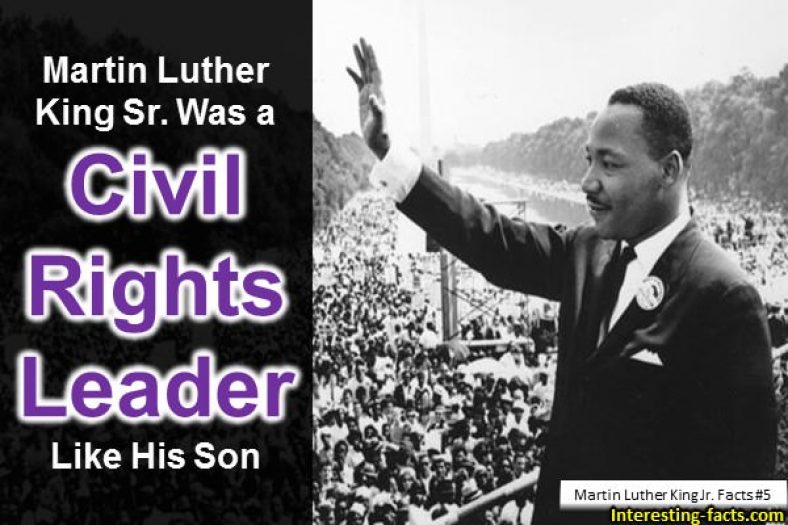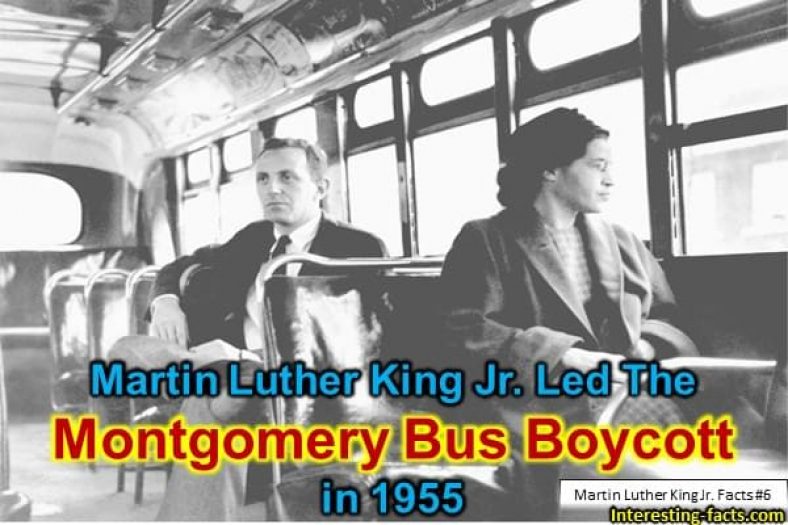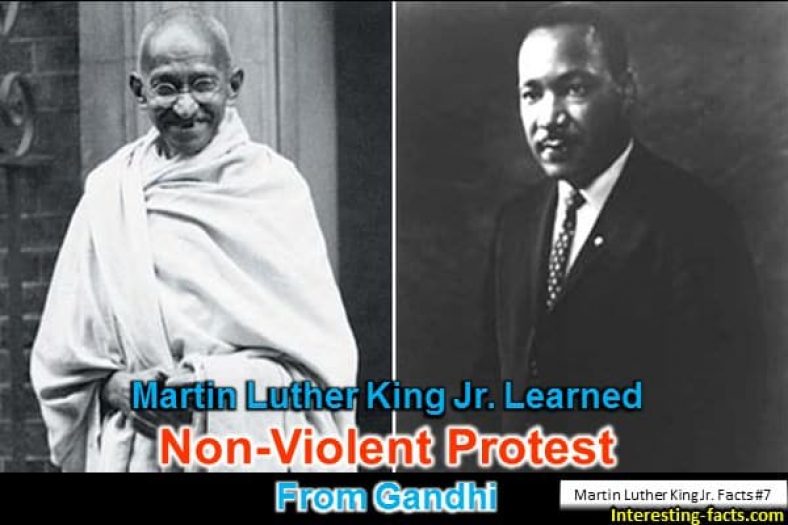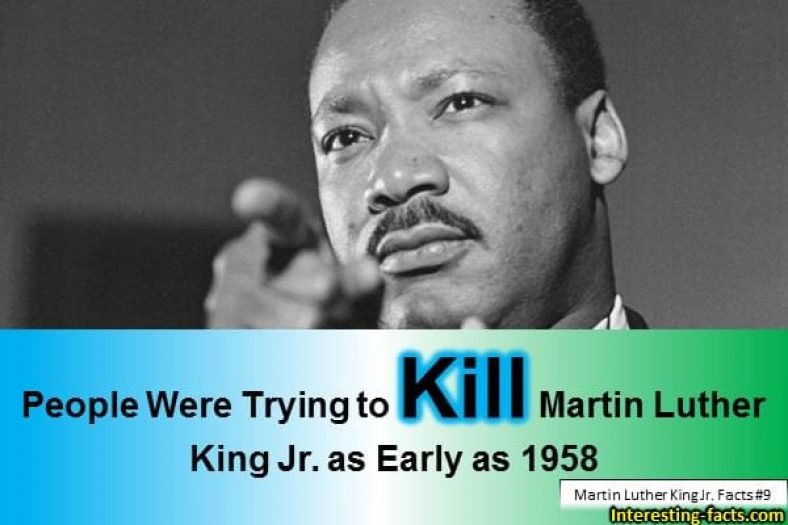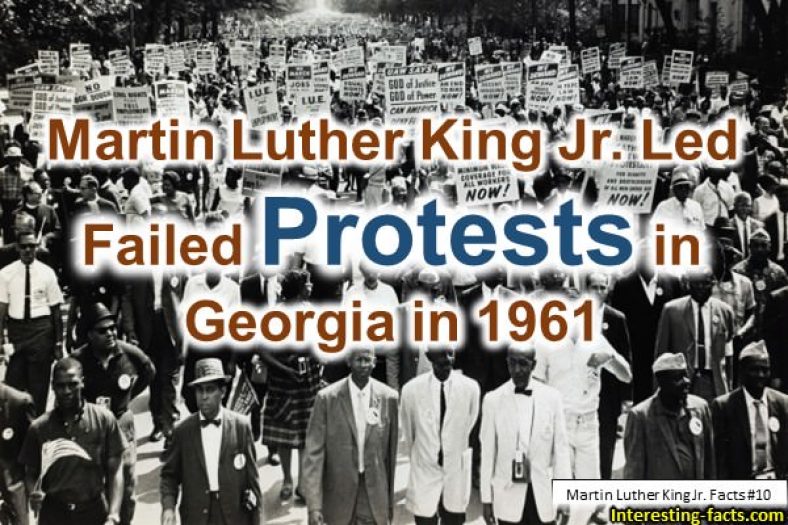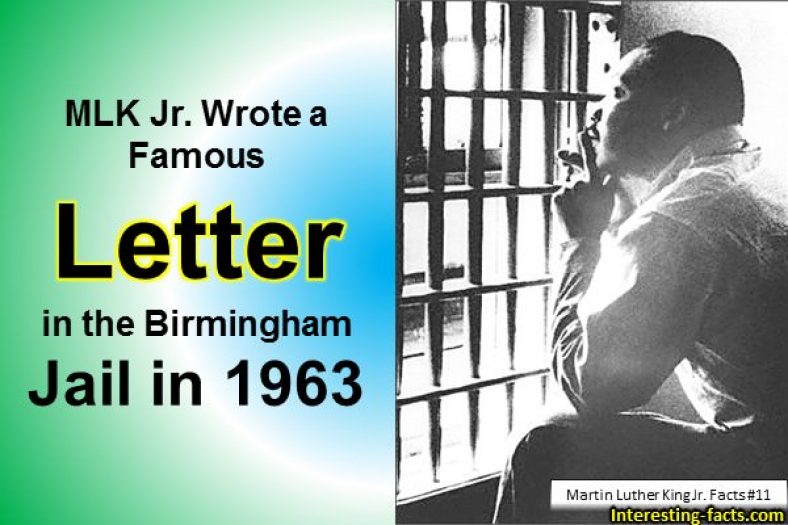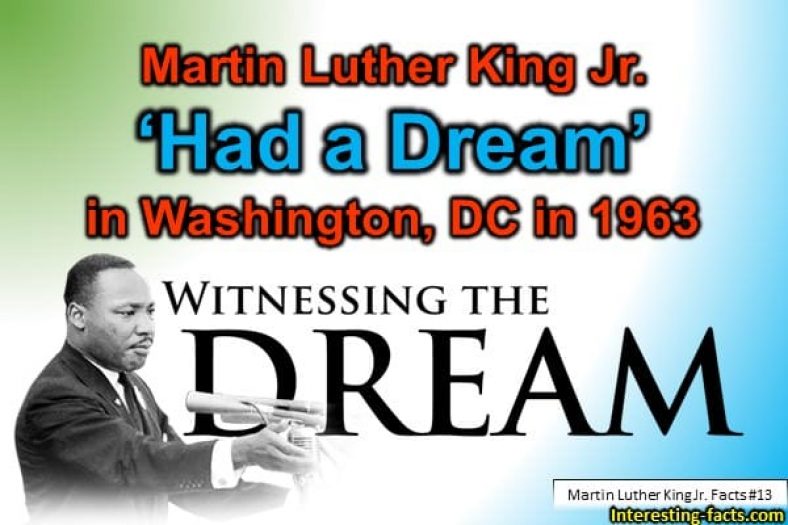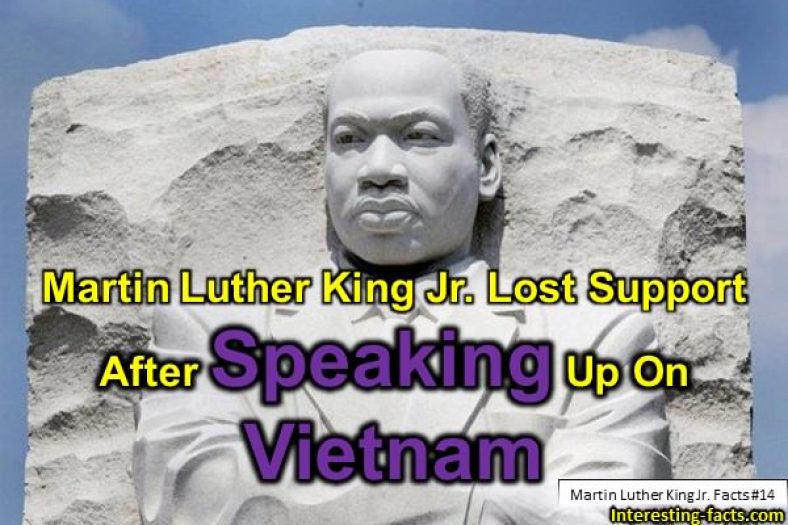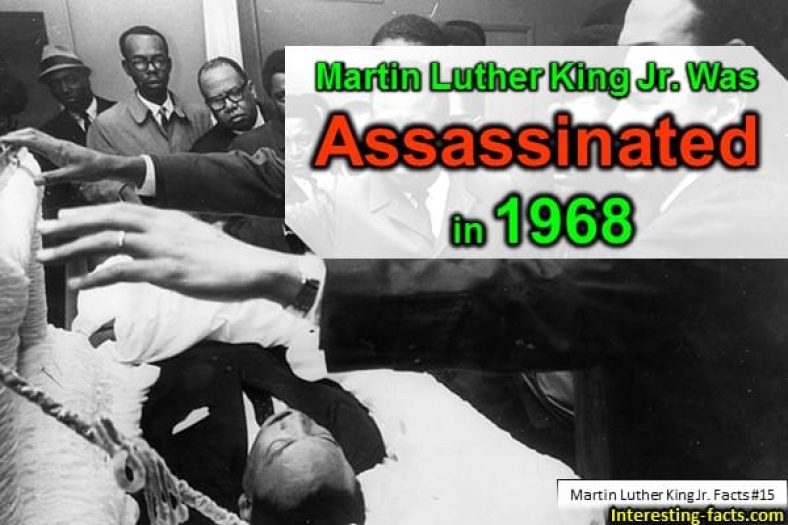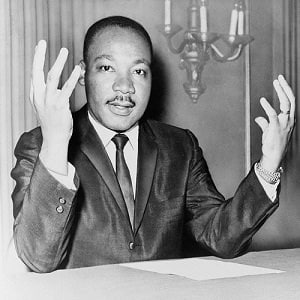Martin Luther King Jr. Facts – Top 15 Interesting Facts
Michael King Jr.’s Father Changed His Name to Martin Luther King
One of the most surprising Martin Luther King Jr. facts is that when Martin Luther King Jr. was born, his name was Michael King, Jr.. His father, Michael King, changed his own name to Martin Luther King in honor of Martin Luther, one of the leaders of the Reformation. His father changed his name to Martin Luther King, Sr. and changed his son’s name to Martin Luther King Jr.
The Reformation, or Protestant Reformation, was a movement in the 1500s against the laws of the Catholic Church. Leaders of the Reformation, like Martin Luther and John Calvin, preached a different type of Christianity than the Catholic Church.
The Reformation would result in the establishment of new sects of Christianity, including Lutherans, Calvinists and Puritans. It was members of these Puritan sects in England that would become some of the first colonists of the United States.
Martin Luther was a fitting name for Martin Luther King Jr., who would grow up to be quite a reformer. He was also a very capable preacher and public speaker, like Martin Luther, so the name was highly appropriate.
back to menu ↑Martin Luther King Jr. Won a Contest for Speaking in Junior High
We mostly think of Martin Luther King Jr. today as being active during the 1960s. One of the little-known Martin Luther King,Jr. facts is that he displayed many of his iconic traits as a youth. From a young age, Martin Luther King Jr. showed both an incredible intellect and great talent as a speaker.
Martin Luther King Jr. won a contest for speaking during his junior year of high school. King was so smart that he skipped grades nine and 12, and started college at only 15 years old. Martin Luther King Jr. graduated from Morehouse College at just 19 years of age. King’s academic achievements are some of the most inspiring Martin Luther King Jr. facts for kids.
King’s degree from Morehouse was in Sociology and, after he graduated, he continued his studies at Crozer Theological Seminary. By 1951, when King was only 22 years old, he had earned a Bachelor of Arts degree and a Bachelor of Divinity degree.
back to menu ↑Dr. Martin Luther King Jr. Received His Ph.D. in 1955
After King received his two Bachelor’s degrees, he married his wife Coretta Scott King. Shortly thereafter, King continued his studies as a doctoral student in systematic theology. In 1955, King received his Ph.D., or doctoral degree, from Boston University.
back to menu ↑In 1954 Martin Luther King Jr. Became the Pastor of a Church
In 1954, before King received his doctorate, he became pastor of the Dexter Avenue Baptist Church in Montgomery, Alabama. King was a passionate preacher who often quoted Jesus Christ and the Gospels at church and in meetings with community members.
back to menu ↑Martin Luther King Sr. Was a Civil Rights Leader Like His Son
Perhaps the most well-known of Martin Luther King Jr. facts is that he was a Civil Rights leader. For most of his life, King had witnessed, and had been subjected to, segregation in Atlanta where he grew up. Segregation was enforced by a system of laws in the Southern United States that gave Blacks limited privileges in public places, and subjected them to humiliating rules.
One of the little known Martin Luther King Jr. facts is that his father Martin Luther King, Sr. was also an advocate for civil rights. The elder King gave his son more than his name. He also gave him the hope of equal rights for all people.
Martin Luther King, Sr. was the head of the National Association for the Advancement of Colored People, or NAACP, chapter in Atlanta. King, Sr. also played an important role in ending the Jim Crow segregation laws in the State of Georgia. Martin Luther King, Sr. was a pastor, and Martin Luther King Jr. credited his father with his own decision to become a pastor.
back to menu ↑Martin Luther King Jr. Led the The Montgomery Bus Boycott in 1955
In 1955, shortly after Martin Luther King Jr. became pastor at the Dexter Avenue Baptist Church in Montgomery, Alabama, he led a bus boycott in Montgomery to protest the Jim Crow laws. According to the laws, a Black person was required to give up their seat on a bus to let a White person sit down.
Rosa Parks was one notable person who refused to give up her seat, doing so in order to make a statement against the unjust laws. This is the first of many Martin Luther King Jr. facts that are part of the history of the Civil Rights movement. King led the bus boycott and it had a significant impact on his life.
The Montgomery Bus Boycott lasted over one year and King’s house was bombed during the protest. King was also arrested. Despite these setbacks, he pushed on and eventually the Supreme Court decided that the segregation of Montgomery busses was unconstitutional.
back to menu ↑Martin Luther King Jr. Learned Non-Violent Protest From Gandhi
One of the most well-known Martin Luther King Jr. facts is that he practiced non-violent protest. In many societies, protest against injustice is done through violence. For instance, the United States Revolutionary War was fought in protest of the British government and their unjust laws.
Many people think that King learned this form of protest from his study of Christian teachings. A long-time Civil Rights activist named Bayard Rustin had advised King to practice non-violent protest. Rustin insisted that this was a more efficient way for King to achieve greater equality for Blacks.
Rustin had worked with Mohandas Gandhi’s non-violent movement in India. He had seen first-hand just how powerful non-violent protest could be and advised King to learn from Gandhi’s example. This is becoming one of the better-known Martin Luther King Jr. facts: King’s style of non-violent protest took the practical work of Gandhi and added the preaching of Jesus Christ.
The combination of powerful Biblical references and non-violent protest, even in the face of violence from authorities, would characterize Martin Luther King Jr. and the Civil Rights Movement. When Martin Luther King Jr. received his Nobel Peace Prize he credited Gandhi who he said, “struggled only with the weapons of truth, soul force, non-injury, and courage”.
back to menu ↑In 1957 Martin Luther King Jr. Became Leader of a Group of Pastors
Martin Luther King Jr. wasn’t alone in his fight for equal rights for Blacks in the Southern United States during the 1950s and 1960s. With Bayard Rustin’s help, Martin Luther King Jr. and other pastors and community leaders formed the Southern Christian Leadership Conference in 1957, shortly after the Montgomery Bus Boycott.
The first meeting of this group of Black ministers and leaders was held at the Ebenezer Church in Atlanta. This was the church where Martin Luther King, Sr. was the pastor. Martin Luther King Jr. had served as an assistant pastor at Ebenezer before going to seminary. For Martin Luther King Jr., holding the first meeting at the Ebenezer Church was like meeting the other Black community leaders at his home. The goal of the meeting was to coordinate the efforts of Black leaders and communities in the South who were struggling for equal rights.
The other Black ministers sensed that King was an extraordinary leader. Rev. C.K. Steele agreed to join the group on the conditions that he could work with Martin Luther King Jr., and that King would be the leader. In the next meeting, held in New Orleans, the group was formally established and Martin Luther King Jr. was chosen as the president.
The Southern Christian Leadership Conference was first formed with the practical goal of ending segregation on busses. They soon expanded their scope with the goal of ending all segregation in the South.
back to menu ↑People Were Trying to Kill Martin Luther King Jr. as Early as 1958
In 1958, Martin Luther King Jr. was nearly killed by a psychotic woman who thought he was forming a conspiracy against her. King was stabbed in the chest and was in the hospital for some weeks after receiving emergency surgery.
back to menu ↑Martin Luther King Jr. Led Failed Protests in Georgia in 1961
The first large-scale test of the Southern Christian Leadership Conference and King’s non-violent practice was in Albany, Georgia. It’s one of the least-known Martin Luther King Jr. facts that his protests weren’t always successful.
The protests in Albany occurred in 1961 and 1962. During this time, King and other ministers organized members of the Black community to peacefully protest against segregation in the city.
One of the most incredible Martin Luther King Jr. facts is that during the protests in Albany, he was arrested and subsequently bailed out by the Revered Billy Graham who was a popular preacher.
King had not planned to be significantly involved in the protests in Albany, but fate intervened when he was arrested. Despite over a year of protests, there was no change in the laws of the city. People became disheartened and began to question the practice of non-violent protest.
back to menu ↑MLK Jr. Wrote a Famous Letter in the Birmingham Jail in 1963
Of the many well-known Martin Luther King Jr. facts, the Letter from Birmingham Jail is perhaps the one that best shows his abilities as a writer. In 1963, King and the Southern Christian Leadership Conference took the lessons they learned in Albany and launched a campaign of non-violent protests in Birmingham, Alabama.
The protesters in Birmingham, led by King, peacefully protested in public spaces. They were defying the segregation laws in force throughout the city. The goal of the protest was to overwhelm the authorities. However, many people were arrested without any change in the laws.
King was one of the people arrested during the protests. While he was in jail, King wrote a letter to local ministers who questioned his role in the Birmingham protests. He was labeled an outsider and told that the way to gain equal rights was to be patient and use the law to prove their case.
In his Letter from Birmingham Jail, King urges fellow leaders and members of the Black community to insist they be treated equally. He argues that freedom was never given, and that it must be taken. He compares the Civil Rights Movement to the American Revolution. King uses Biblical references and insists that action must be taken. Most importantly, he insists that the action taken must be in the form of non-violent protest.
back to menu ↑The Birmingham Protests Made MLK Jr. a National Icon in 1963
The protests in Birmingham received nationwide media coverage. People all around the country saw the images of police attacking peaceful protesters. The 1960s were the beginning of the television age, and the images and footage people saw shocked them. Police used fire hoses and guard dogs to attack the protesters.
One of the controversial Martin Luther King Jr. facts regarding the Birmingham protests is that King and the Southern Christian Leadership Conference recruited teens and young adults to participate in the protest. The images of police spraying teens with fire hoses helped convince the public that the laws should change. The use of teens and young adults in the protests was controversial but ultimately effective.
As a result of the protest, the Jim Crow segregation laws in Birmingham were repealed. Martin Luther King Jr. became a national figure, and the Civil Rights Movement had now gained a national audience.
back to menu ↑Martin Luther King Jr. ‘Had a Dream’ in Washington, DC in 1963
During the Birmingham protests and throughout the 1960s, the Civil Rights Movement continued in the Southern United States. In Florida, Alabama, Mississippi and other states, protesters used the non-violent tactics of King and the Southern Christian Leadership Conference to gain more equal rights.
King was not directly involved in all the protests, though he did take part in many. One of the often-quoted Martin Luther King Jr. facts is that he was arrested many more times in his pursuit of equal rights. The Civil Rights Movement was gaining popular support and the people working for greater Civil RIghts wanted to send a message to the federal government in Washington, D.C.
The many groups and organizations involved in the movement for equal rights decided that a march of thousands of people in the nation’s capital was needed. They saw a march as a good way to convince the federal government to take a more active role in addressing Civil Rights issues. Bayard Rustin, the advisor who introduced Martin Luther King Jr. to non-violent protest, was the principal organizer of the march.
The March on Washington took place in 1963 and included members of the National Association for the Advancement of Colored People, or NAACP, the National Urban League, the Congress of Racial Equality, and many more groups dedicated to equal rights for Blacks.
During the March on Washington, Martin Luther King Jr. delivered his famous I Have a Dream speech. This is another of the well-known Martin Luther King Jr. facts. King was truly the voice of the March on Washington, and of the wider Civil Rights Movement.
King used his powerful Biblical references, but the tone of his speech reflected the changing tone of the public conversation on civil rights. Martin Luther King Jr. expanded the principles of equality for Blacks to include all Americans, with a particular focus on uplifting the poor.
The speech was incredibly well crafted and is the best-known and most quoted of all Martin Luther King Jr. facts. King was able to bridge the gap from Black Civil Rights to the eternal quest for equality and the well-being of everyone in the United States and around the world. Some Black leaders, including Malcolm X, felt that the March on Washington was a capitulation and too inclusive.
The March on Washington received a lot of media coverage and King was thrust further into the spotlight. From this time on, more Martin Luther King Jr. facts emerged as the public took more notice of his life and work.
back to menu ↑Martin Luther King Jr. Lost Support After Speaking Up On Vietnam
The March on Washington marked a turning point for the Civil Rights Movement and for Martin Luther King Jr. He used the national spotlight to continue to push for equal rights for Blacks and began to expand his message to include all people.
As a result of the efforts of King and the countless others who contributed to the Civil Rights Movement, the federal government passed the Civil Rights Act in 1964. The federal government had been convinced by popular support and the March on Washington to take an active role in guaranteeing equal rights for Blacks. From now on, individual states in the United States could not create unjust laws that segregated people.
The Civil Rights Act is a monumental chapter in Black history, similarly to the Emancipation Proclamation. Both Lyndon Johnson, the president who signed the act, and Martin Luther King Jr. were compared to Abraham Lincoln, who signed the Emancipation Proclamation that freed slaves in the United States.
While the Civil Rights Act guaranteed equal rights under the law, the society and culture in some places remained the same. It’s another of the inspiring Martin Luther King Jr. facts that he continued to work for equality after having achieved success and national recognition for his work.
King expanded his message and spoke about equal rights for poor people, and equal rights for people of every race and color. Asian Americans, Native Americans, Jewish Americans, and other groups also faced discrimination. Martin Luther King Jr. now saw his role as a leader for all oppressed people in the United States and around the world.
King also continued to preach his message of non-violence and spoke against the Vietnam War. This is one of the more controversial Martin Luther King Jr. facts. For King, expanding his message of non-violence to the foreign policy of the United States was a bold move that cost him many supporters in high-ranking places.
back to menu ↑Martin Luther King Jr. Was Assassinated in 1968
There are not many sad Martin Luther King Jr. facts. King led a hugely inspiring and positive life, overcoming great injustice through peaceful means. The saddest fact is that we will never know what further good he may have gone on to do in the world.
On April 4, 1968, Martin Luther King Jr. was assassinated while giving a speech from a motel balcony. His assassination caused a violent reaction around the country. This is one of the surprising Martin Luther King Jr. facts, considering that he had dedicated his life to promoting non-violent protest.
Earlier in his life, when asked how he would like to be remembered, King said that he wanted to be remembered as someone who tried to “feed the hungry”, “clothe the naked”, and “love and serve humanity”.
So many Martin Luther King Jr. facts are inspiring. As a talented youth, King worked extremely hard and showed his incredible intellect and power for motivational speech from a young age.
King followed in his father’s footsteps and became a pastor. From this role of service to God, King became a servant to the oppressed people of the Black community. Through his role in the Southern Christian Leadership Conference, King became a national figure in the Civil Rights Movement.
While convincing the federal government to take a more active role in guaranteeing equal rights, Martin Luther King Jr. expanded his message of equal rights and spoke of a vision in his I Have a Dream speech.
King spoke about a vision of a United States, and an entire world, where all people could live together in harmony. He spoke about equal rights for all people regardless of their race, color, background or beliefs. It was a powerful vision that continues to shape our world today.
Interesting Facts about Martin Luther King Jr. Summary
Martin Luther King Jr. is an icon of American history. Learning Martin Luther King Jr. facts gives us an insight into the history of the United States and the history of the Civil Rights Movement.
As a Baptist minister, Martin Luther King Jr. took many principles from his Christian beliefs. Martin Luther King Jr. facts tell us about the man that was at the forefront of the Black struggle for civil rights in the 1960s.
The saddest of the Martin Luther King Jr. facts is that he died before he could do more good in the world. Martin Luther King Jr. was assassinated in 1968 after more than a decade of work to bring equal rights to Blacks.

